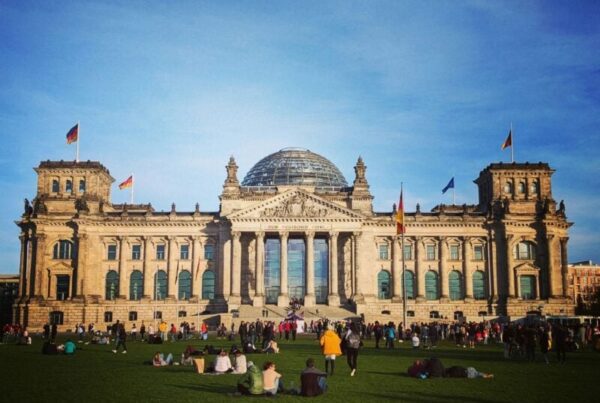In addition to what the speakers called “state-sponsored forced labour” in Xinjiang, the discussion emphasised the importance of both government legislation and industry players in addressing the situation for the solar PV industry, which is one of a number of industries exposed to alleged exploitation of the Uyghur population.
In particular, the speakers emphasised a “reversal of the burden of proof”. The most prominent example of a reversal of the burden of proof in current policy is the US’ Uyghur Forced Labor Prevention Act (UFLPA), which requires suppliers shipping into the US to prove that their supply chains are completely free from exposure to forced labour, rather than relying on proof from the importing governing body.
In October last year, divisions of the European Commission proposed a ban on products using forced labour that would identify “high-risk” areas where a reversal of the burden of proof would be enforced. This legislation is yet to come into force and depends on talks within the EU to determine the “final shape” of the regulation. A date for possible implementation is also yet to be confirmed.
ESMC pressure
From the solar industry side, the ESMC has been lobbying for forced labour regulations for some time. Its reasoning has been twofold; the moral imperative that rests on Europe to refuse to tolerate or financially enable forced labour, and what it calls the ‘unfair’ solar market landscape that is boxing out European manufacturers.
It has been more strident than other representative trade groups in its condemnation of China and calls for protections for the EU market. Its membership consists of mostly European and US upstream and downstream producers and startups.
At the Trilogue yesterday, Johan Lindahl, ESMC secretary general, said that it was crucial to provide support to manufacturers in Europe in order to provide the option to avoid suppliers that are exposed to Xinjiang.
Inadequate due diligence
The reality of a “reversal of the burden of proof”, speakers suggested, would be a complete divestment and disengagement with Xinjiang province on the part of the solar industry.
Patricia Carrier of the Coalition to End Forced Labour in the Uyghur Region said that solar companies have no way of doing adequate due diligence procedures ‘on the ground’ in Xinjiang. This is largely due to the alleged nature of the forced labour, which the speakers said was backed by the Chinese Communist Party and operates as much on political as economic grounds – and often through more obscure means.
“This is very different from forced labour undertaken by private actors, where companies can undertake due diligence,” Carrier said.
“Given the pervasiveness of forced labour in the region, experts have concluded that all products made in the region should be presumed to have been made with forced labour. This means that in terms of sourcing from the region or having supply chains linked to the region, there are no valid means for individual companies to verify that any supply chain is free from forced labour”.
She continued: “Any claim that companies are doing any type of due diligence is simply not true. You cannot speak to workers, and you can’t get credible information out of operators that have operating facilities in the region.”
Once again, this effectively aligns with the nature of the UFLPA, which assumes that any product with components from Xinjiang is exposed to forced labour until proven otherwise. Solar companies either have to gain access to reportedly inaccessible facilities, or move.
Solar supply chains
The upstream portions of the solar supply chain are the most exposed to the alleged forced labour, namely quartz mining, metallurgical silicon (MGS) production and polysilicon production.
Data from Sheffield Hallam University, which has published multiple high-profile reports on the solar industry’s exposure to Xinjiang, said that as of 2022, the Uyghur region accounted for 35% of the world’s polysilicon production, down from 45% in 2020.
The same Sheffield Hallam report – which was taken down and then republished in November 2023 after a reassessment of solar manufacturer Maxeon – said that batches of MGS and polysilicon are often blended from various sources, which could introduce materials tainted with forced labour to supplies with any level of exposure risk.
But risk is not isolated to the most upstream supply. Zenz provided data at the Trilogue showing a 61.5% increase in the export of solar cells, lithium batteries and EV components from Xinjiang in 2023.
Bifurcation from Xinjiang
Speakers at the Trilogue also discussed supply chain bifurcation, where manufacturers establish a ‘clean’ supply chain – usually to satisfy the terms of the UFLPA – and one that remains exposed to Xinjiang.
This can cause problems for markets like the EU and the UK which don’t have the US’ stringent laws.
Carrier said: “Bifurcation means that markets like the UK and Europe are becoming dumping grounds for tainted goods.”
Europe has been something of a ‘dumping ground’ for solar modules in recent months – it received around 100GW of capacity in 2023, far in excess of the deployed capacity.
These modules are primarily shipped from China, and many were denied entry to the US, but it’s not possible to assert what – if any – proportion of them are exposed to forced labour practices.
Returning to the “reversal of the burden of proof”, many of the modules were diverted from shipment to the US because of the UFLPA, which resulted in around 2GW of module capacity delayed and held at US customs in 2022.
Zenz said that such measures “Will result in some over-enforcement”, where products may ultimately be found to have been detained unnecessarily whilst producers prove compliance. “But the alternative to some over-enforcement is extreme under-enforcement,” he said, due to the inaccessibility and opaque nature of many operations in Xinjiang.






